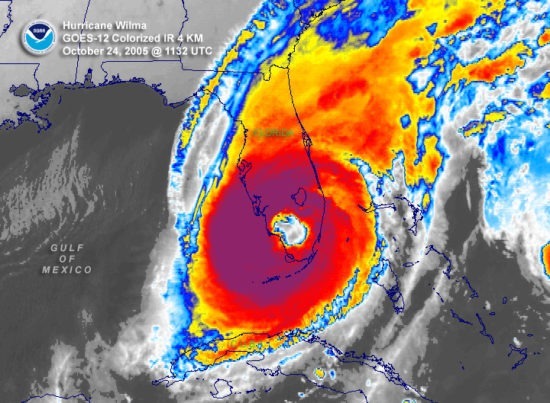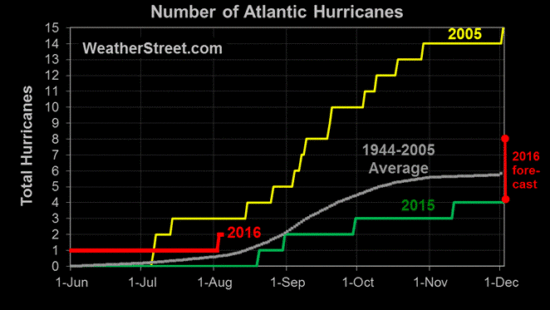In less than two months (October 6, 2016) it will be 4,000 days since the last time a major hurricane made landfall in the U.S., which was Wilma on October 24, 2005.
Wilma was a record-setter, being the strongest Atlantic hurricane on record, with peak estimated sustained winds of 183 mph and lowest surface pressure of 882 mb. That surface pressure corresponds to a 13% removal of atmospheric mass in the core of the hurricane compared to normal sea level pressure.
But after the record-setting 2005 Atlantic hurricane season, with a whopping 27 named tropical storms, the bottom pretty much dropped out of hurricane activity since then.
After an unusual January hurricane this year (which I don’t meteorologically count as part of the 2016 season), we’ve had one system (Earl) that briefly achieved hurricane status before making landfall in Belize several days ago:
Will we reach October 6 without a major (Cat3 or higher) hurricane strike? No one knows. The Atlantic is quiet right now, and there has been no significant trend in global tropical cyclone activity since satellite monitoring started in the early 1970s.

 Home/Blog
Home/Blog






As compared to normal sea level pressure, such surface pressure signifies a 13% reduction of atmospheric mass in the hurricane’s core.